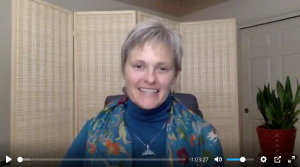 One of the most common animal communication challenges can be working with conflicts between humans and wild animals who are considered to be “pests”, “nuisances”, “problems” or “dangerous.” With the destruction of habitat, climate disruption, and encroaching human urban development into wildlife habitat and corridors, these kinds of conflicts are increasing.
One of the most common animal communication challenges can be working with conflicts between humans and wild animals who are considered to be “pests”, “nuisances”, “problems” or “dangerous.” With the destruction of habitat, climate disruption, and encroaching human urban development into wildlife habitat and corridors, these kinds of conflicts are increasing.
I am often asked to help with animal communication in these kinds of situations. Animals I’ve worked with include insects, mice, rats, squirrels, reptiles, coyote, deer, elk, skunks, and bear, to name just a few. Each communication and each situation is different. Animal communication can be helpful; sometimes it resolves the conflict by itself; often, other measures are necessary as well.
Here are some of the most important things I have learned, and some of the tools I have used, both in my own home and land and with clients, in working with situations involving human-animal conflicts.
1. Understand the situation from the animal’s perspective.
As with any communication, this is the first and most important place to start. Any other conversation must evolve from here.
Using communication, we can find out from the animal what is going on in the situation from their point of view. Why are they where they are? How do they feel about it? How do they feel about the interface and interaction with humans and the human world?
Some examples: if there are ants in a home, we can ask them: why are they there? What are they attracted to? If squirrels are inside a home’s walls, we can find out what is attractive to them there? Where are they entering? Are there nests, young? If coyotes are coming into a neighborhood, where are they coming from? What has happened to their habitat? What are they seeking?
Understanding the animals’ perspectives, viewpoints, needs, and desires is the foundation of creating more harmony, understanding, and peaceful relationships. For many wild animals, having a human seek to understand them in this way may be a first, and a complete surprise. Having an interaction with a human being who is genuinely interested in understanding them may, in itself, begin to create shifts in relationships or behavior.
2. Communicate with the animals about the human perspective.
Let the animals know what the issues are for the humans, and what the humans are considering doing about it. This can be difficult, especially if lethal measures are being considered. Helping the animals to understand the issues from the human perspective is also important for facilitating any kind of dialogue. It is important to be respectful and also listen to the animal’s responses about the human’s viewpoint, including expressions of fear, anger, or confusion.
For example:
Carpenter ants, squirrels nesting in the walls: “We do not want you destroying our house. We will remove you if you are unable or unwilling to leave on your own.”
Fire ants: “Your nests are right where we need to walk, and your stings are dangerous for us. We plan to treat the mounds that are in the areas where we have to walk.”
3. Find out from the animals, and the humans, if there is any possibility for cooperation or compromise.
Sometimes, but not always, negotiation is possible, and effective, in solving human-animal interface issues.
I have worked with food-eating ants (sugar ants) who willingly left a home once an alternative source of food was provided for them outside (and the indoor spaces cleaned very well). The homeowner reported seeing the line of ants literally reverse direction and head out the window once the “deal” was made.
I have successfully negotiated with squirrels who were living inside a home’s walls about the dangers of remaining there, and secured their voluntary “evacuation.” We communicated to them about the length of time (4 days/nights) they had to voluntarily relocate their families; after that time, the holes would be sealed. The squirrels moved out; the holes were sealed, and the home has not had a problem with squirrels inside since.
Animals always have the choice whether or not to comply with human requests or ultimatums. I have heard carpenter ants say the equivalent of, “Hell, no, we won’t go, we will continue to eat this house as long as it is here”, even if they understand that the consequences of this are being killed.
4. Communicate clearly to the animals about human actions and consequences.
Here is an example of how I have used this principle in my own home.
Pack rats are ubiquitous here where I live in the desert southwest. They are a valuable part of the desert ecosystem, an essential link in the food chain, and, in my experience, are wonderful little characters who are resourceful, intelligent, and awfully darn cute. And–they are tremendously destructive to human homes and belongings.
So, I’ve made a deal with the pack rats near my home. I have asked them to remain outside of the perimeter of my fences and at least 30 feet away from my home structure. I give them a clear picture of what these areas are and what they look like. I also let them know that they are in danger from my cats and dogs if they come inside the perimeter of our fences.
If I find a pack rat nest closer than this, I have communicated to the rats that I will use a humane trap and relocate the them to a nearby wild area (and I communicate about what I am doing with the rat both before I trap and when I am relocating them.) Pack rats build solitary nests, so this helps greatly with humane trapping and relocation. When I release the rat, I do so with a blessing and offer them my gratitude for their gifts, their presence, and their place in the web of life, and wish them well in establishing their nest and home in a safer place.
If I find rat nests are outside of the perimeter I have established, I don’t disturb them. I also don’t disturb them if they are nesting in an area that does not have anything they can destroy (for example, the dirt floor of my barn away from the area where my chickens live.) So far, this has worked in my area to create a harmonious, conflict-free relationship between me, my animal family and the pack rats.
5. Communicate and honor the animals’ intelligence, awareness, and ability to say yes, no, or maybe to any request or ultimatum.
Respect, understanding, and recognition of animals, even those who are problematic for us, is an essential foundation in creating more harmony, balance, and peaceful co-habitation in our world.
As much as possible, in my own personal home and land, I try to use as many non-lethal deterrents as possible. That said, there are some situations, for myself and others, when these are not a practical possibility. In these cases, communicating clearly about what is going to happen, and also understanding the animal’s responses, is an essential part of navigating the sometimes very difficult task of living together in harmony with all life.
6. Use non-lethal deterrents when possible
Here are a few of the non-lethal deterrent tools that I use to help to keep my home and animal family safe while still honoring the wild ones around us:
Nite Guard Solar Predator Lights
I have used these for years on my perimeter fencing to deter coyotes, foxes, raccoons, and other wildlife. So far, I have had no incidents. They work, they are easy to use and install, and they last for years and years. Recommended to me by fellow chicken lovers, these are a staple in my “humane deterrent companion animal protection” plan. (I also have a completely enclosed, predator-proof habitat for my chicken friends.)
Recommended to me many years ago by my auto mechanic, I install these under the hood of my vehicles, in my garage, barn, utility closet…anywhere rodents are attracted to that I want to keep rodent-free. So far, they have worked well. The only downside of these that I have found is the frequent need to change the batteries.
Ultrasonic flea and tick repellents (for dogs)
Until just the last couple of years, I haven’t had to worry much about fleas and ticks here in the southwest. But, with climate change, they are becoming more and more prevalent. I’ve started using these ultrasonic repellents on my dogs’ collars. I try to avoid chemical treatments as much as possible, and many of the herbal sprays are too strongly scented for my sensitive dogs (and me) to tolerate.
It’s not always possible for everyone to use non-lethal methods, especially when negotiations and compromise are not possible. My view is that we can do our best, understanding that these conflicts are not always solvable, and each person must choose the right course of action for their own situation and circumstances.
An attitude of respect, attempting to understand, and communicating as clearly as possible can go a long way in creating more harmony between our species and the others who share our world.


